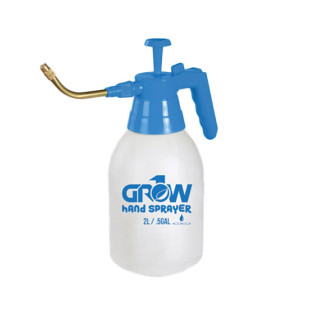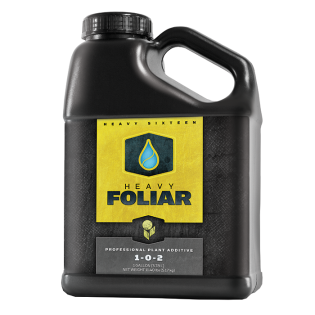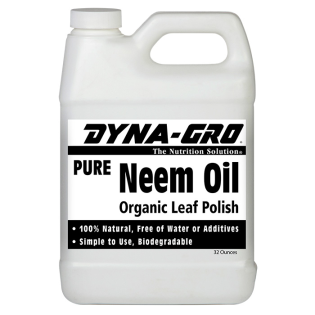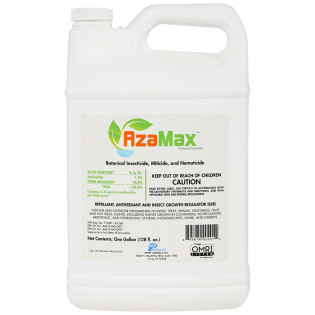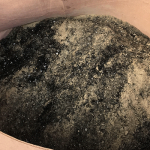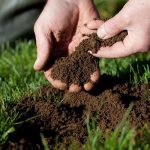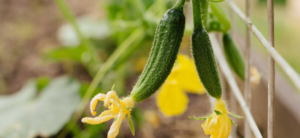
Whether you're battling a pest or disease outbreak, or struggling with nutrient uptake at the roots, a foliar spray can help save your grow.
Oftentimes, growers will actually undertake foliar spraying on a routine basis to keep their plants healthy, actively preventatively instead.
There are all kinds of health benefits you’ll unlock when you start spraying your plants foliage with nutrients or some form of plant wash/insecticide.
But, this isn’t a simple task that you can just undertake blindly. There are specific instances in which you should or shouldn’t do this.
That’s why we are writing this guide, to help you feel confident in your gardening abilities.
We’ll explain what exactly this is, and the two main instances in which you would do it.
Then, we’ll cover exactly how to do it, along with all kinds of other important intricacies you need to be aware of to get the best results.
What Does A Foliar Spray Do?
Foliar spray is exactly what it sounds like - you’re simply spraying something onto the foliage of your plants. In other words, you’re spraying the leaves.
Just as humans have pores in their skin, plants have pores in their foliage. This means they can actually uptake nutrients through their leaves!
While most of your feedings should occur at the roots, you can actually foliar feed your plants in the event of a nutrient lockout issue in the soil. If your plants become root bound, for example, this will be a band aid solution.
This is just one benefit of spraying your foliage, though. You will also need to foliar spray to prevent or combat pests & diseases. Whether you spray neem oil, soapy water, or an insecticide is entirely up to you.
How Often Should You Foliar Spray?

One of the main questions we get about this tactic is how often should you foliar spray? This obviously depends on what you’re spraying for, and what exactly you are applying to your plants.
If you’re spraying for pest or disease problems, the specific type of product you’re applying will dictate your frequency.
Some products, such as soapy water or neem oil, can be applied daily. Certain insecticides, however, should be applied every other day. Always read the manufacturer's recommendations before spraying anything or developing a strategy.
When it comes to foliar feeding your plants nutrients, though, the protocol varies. Are you still applying nutrients at the roots? If so, you should only feed the foliage on a supplemental basis. Some recipes call for every 3 days, while some call for every 2 weeks, for example.
But if you’re suffering from nutrient lockout and cannot feed nutrients at the roots, you’ll want to foliar feed more frequently to keep your plants nourished.
What Type Of Sprayer Should I Use For Foliar Spraying?
When it comes to foliar spraying, you want to make sure the atomizer or sprayer you’re using produces an ultra-fine mist on your plants. The smaller the droplets, the better. This leads to an increased coverage area.
Consider how many plants you have, and how often you’re going to spray. If you’re growing indoors with just a couple of plants, you can use a small handheld sprayer with no problem.
But if you have a huge outdoor garden or greenhouse, you’ll likely want to invest in a battery-powered backpack sprayer to lighten your workload and save your back.
If you’re looking for some specific recommendations for your next foliar spray, check out our review of the top garden sprayers of the year. We have a pick in there for every type of grower!
How to Foliar Feed Your Plants
We’ll start by discussing how to foliar feed your plants, and dive into spraying for pests later on. When it comes to foliar feeding, you need to first address the issue that’s preventing you from feeding at the roots.
If your plants are rootbound, you should attempt to transplant them into a larger garden pot and loosen up the roots.
If your plants aren’t taking up nutrients because of a lockout issue, address whether you’re dealing with an imbalance (Read our guide on nutrient ratios for more information) or a pH related problem. Both of these are easily remediable.
However, in the meantime, you can keep your plants growing by foliar feeding. Let’s start by covering when to do this.
When Is The Best Time To Foliar Feed?
When it comes to spraying anything on your plant’s foliage, proper timing is key. You should try to spray early in the morning when the temperatures are cooler out.
If you check the temperature and see it’s already warmer than 80 degrees fahrenheit, you should wait until the following day, or later that night.
There is a direct relationship between temperature and whether the stomata (pores on your plant) are open or not. If it’s too warm, they’ll close up, and won’t be able to uptake the nutrients you’re applying.
You also need to be aware of the lens the sun can make on your plant’s leaves when they have moisture on them. If you spray midday with full sun, it could easily burn your plants. The same applies with grow lights.
Humidity plays a role, too. Your plants will have an easier time uptaking nutrients when conditions are relatively humid, between 60-70%.
A few final things to consider is the weather. If it’s exceptionally windy, you should avoid foliar feeding.
The solution will dry up from the airflow before your plants have the chance to fully benefit from the feeding. Of course, the same applies to rain - this will just wash the solution off your plants.
Organic Foliar Feed Recipe Example
You’re probably wondering, what should I even feed my plants at the foliage? Can I feed anything on their leaves?
The answer is no - you should be pretty precise in selecting nutrients and additives to feed at the foliage.

Your fertilizer or additives should be less concentrated, as to not burn the foliage. Many growers achieve best results when using organic inputs, such as:
- Kelp Meal
- Compost Tea
- Fish Meal
Or, you can use products specifically engineered for foliar feeding.
Heavy 16 Organic Foliar Feeding Recipe
Heavy 16 is a premium horticulture nutrients producer, and growers have reported great success using their line for foliar feeding.
It not only provides ample nutrition to your foliage, it increases plant resistance and provides protection through an increase in the biochemical rate of photosynthesis. Here is an organic foliar feed recipe you can try:
- 30mL Heavy Foliar, 1mL Heavy Roots, 1mL Heavy Fire PER QUART OF WATER
- Feed every three days starting after the first few weeks of veg
- Maintain this concentration through the fourth week of flower
This recipe provides full spectrum nutrition to take your plants from seed to harvest, but you’ll want to add in supplemental bloom nutrients to increase the bud development during flower.
Organic Metabolism & Resistance Boosting Foliar Feeding Recipe
To really optimize your plant’s health, you can also routinely spray the following recipe, which will boost your plants immune system while increasing metabolism, so that growth rates increase.
This one won’t provide the same level of nutrition as the Heavy 16 recipe, so don’t look at it as a replacement, but rather, a compliment. Here is the protocol we recommend:
- ¼ tsp Rx Green Solutions Axiom, .06g Plant Success Great White, and just a few drops of Spray-n-Grow Coco Wet
- Feed every two weeks
These are just a few organic foliar feeding recipes, and by no means are the only options you have.
You can cultivate awesome plants with all kinds of different recipes, so find one that suits your goals! Let’s move onto how to foliar spray for pest & disease control.
How To Foliar Spray For Pest & Disease Control
The other side foliar spraying is for pest and disease control. This is something you can do as preventative care, or something you’ll have to do to combat an infestation.
Hopefully, it’s just the former! Whichever the case, we’re going to explain which products you should use, and best practices to get the job done.
Choosing The Right Pest & Disease Control Products
The first step in learning how to foliar spray for pest and disease control is learning which products to use for the job.
When it comes to preventative spraying, you cannot go wrong with neem oil or plant washes. These are natural, organic products that increase plant resistance while deterring many of the common garden pests you’d encounter.

However, if you’re dealing with an existing bug infestation you’ll likely use something more intensive, such as an insecticide. First, though, you’ll need to first learn which bug is plaguing you!
You’ll want to use different products for an aphid infestation than you would a caterpillar outbreak, for example.
The same goes for diseases & illnesses. Most of these are pretty easy to differentiate between, such as powdery mildew and rust.
Our guide on the common garden pests & diseases is a great place to start. Once you know the culprit, you can choose the right product accordingly.
Best Practices For Foliar Spraying For Pest & Disease Control
A lot of the same best practices for foliar feeding that we mentioned earlier apply to spraying for pest & disease control too - such as time of day, weather conditions, etc.
But because of the types of products you use in this approach, you need to be more precise with your application - because most products are a contact kill.
Always be sure to douse the underside of your plants, effectively covering each and every inch of your foliage.
Application rates & frequency of spraying will vary depending on which products you are applying. Carefully follow manufacturer recommendations.
Final Tips & Recommendations Before You Foliar Spray
We want to leave you with a best practices and tips for spraying your plants, regardless of if you’re applying nutrients or pesticides.
Be sure to always spray RO filtered water - just as you want to apply clean water to your roots, you want to do the same to your foliage.
This ensures you aren’t giving your plants any of the nasty additives or chemicals your city puts in your tap water. But, this also prevents clogs in your sprayer, and this becomes more important the finer mist your sprayer puts out.
Similarly, be sure to pH the water in your sprayer prior to application. This is more important for foliar feeding, since there is a direct correlation between pH & nutrient availability. Keep pH between 5.8-7.
It’s a good rule of thumb to always spray just one plant first, let it sit overnight, and see how it reacts. Not every veggie or strain is going to respond the same to foliar spraying, so be cautious.
One final thought we want to leave you with is that you can always reach out to the folks here at Hydrobuilder if you have any questions about foliar spraying or feeding. Or, any questions about growing in general.
We are your one stop shop for all things growing, whether you’re indoors or outdoors, soil or hydro. We offer industry leading customer service, and the best brands & products the horticulture industry has to offer.







